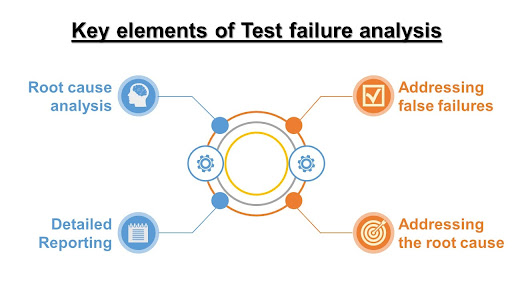views
Software testing is an extremely important process to ensure that all quality requirements are met before any application is released in the market. With DevOps, the release cycles have become shorter, but expectations are still the same, i.e. high-quality end product. But, it is a fact that the tests fail sometimes and testing may hit a roadblock. Usually, a knee-jerk reaction is to pass the buck to the development team for fixing the issue. However, the ideal approach is to understand the root cause of the failure.
Test failure analysis is a systematic process to analyze and identify the underlying causes for a failed test and to prevent them from occurring again.
Test failure analysis is an important exercise that should be conducted for all critical test failures. Continuous testing generates a lot of data in terms of test results which can be utilized for test failure analysis which can help in sifting, identifying the cause, and fixing the issue. It helps in improving the overall QA Ops process by helping in managing and addressing the root causes of any issue.
Key elements of Test failure analysis
Failure in testing analysis is a good quality control measure that provides you with insights on what exactly went wrong, at what point, and understand the reason behind it. This helps the teams in improving the testing strategy based on the findings by identifying whether the problem was a testing issue or a flaw in design and development.
Test failure analysis is tailored as per the organization’s QA process and the application under test. However, certain key elements are common across the board and are mentioned below.

Root cause analysis
Root cause analysis of the defect holds the key to understanding what exactly went wrong.
Was it because of issues with the software or there was a problem with the test itself?
Once this basic question is answered, it is time to trace the origin of the problem. The problem could be at any point in the whole development cycle: requirement gathering and understanding, or design and development, or in some cases environmental issues while testing. Once the origin is verified, the teams need to work on it for corrective action.
If there is an issue with the test, then the whole test plan needs to be re-examined and corrected before further testing can take place.
Addressing false failures
False failures are the bane of test automation. These are the cases when the automation system should have been able to correctly identify whether it is a Pass or Fail. Instead, it is incorrectly specified as a Fail. We have covered this in detail in our blog, click here to read more. False failures can lead to unnecessary delays because every failed test case needs to be triaged and based on its priority needs to be addressed.
Detailed Reporting
Good reporting aids the teams to
- Understand test results
- Saves time in going through a huge amount of data that was generated while testing
- Helps in distinguishing between actual defects, script errors, feature change and the noise.
- Helps in addressing the key question of how many known defects are in the build, and can the shipping be delayed, while the test team works on classifying the automation failures as actual bugs or a re-test scenario.
Addressing the root cause
Once the actual defects have been identified and traced to their origins, the concerned team needs to first segregate the ones that need immediate attention and address them as per the priorities. Depending on the magnitude of the change, the re-test can be done within the same test cycle or a new sprint can be conducted just for testing.
Acing the test failure analysis with Webomates
In a typical test cycle, on average 30%-40% of tests fail. Though 93% of these failures are NOT related to defects and are false failures, they need to be triaged by the testing team to understand the underlying reason for these failures. Once the impacted test scripts are fixed, then the automated test run can be deemed a success with either true fails(i.e. defects) or true passes(scripts passed).
Webomates provides solutions to handle such scenarios with ease. Read for more : Test Failure Analysis
If this has piqued your interest and you want to know more, then please click here and schedule a demo, or reach out to us at [email protected]. If you liked this blog, then please like/follow us Webomates or Aseem.











